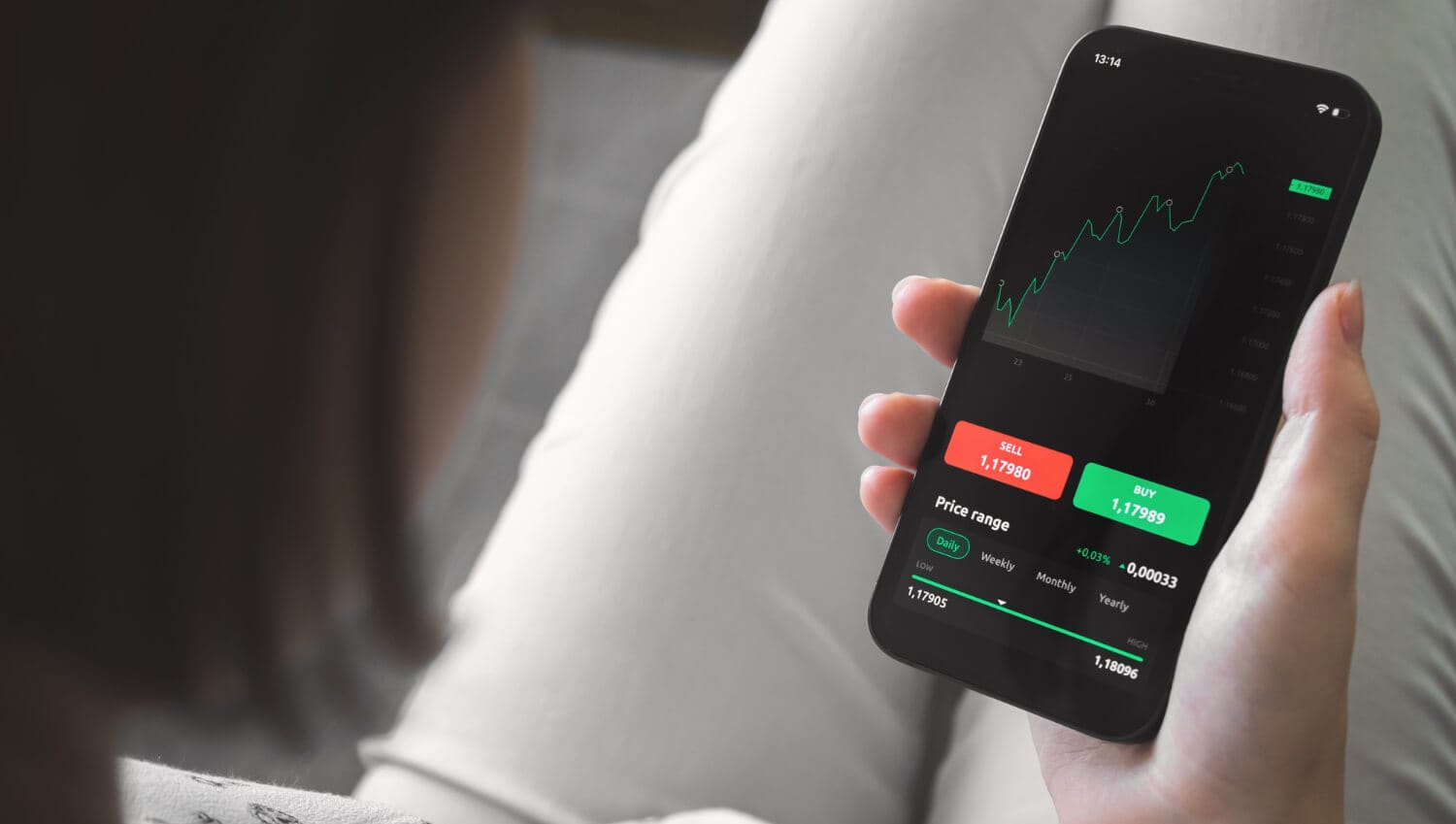Balancing Personal Life and Forex Trading: Strategies for Traders

Forex trading, a global marketplace for trading currencies, offers substantial profit potential but also demands significant time and attention. Traders often face the challenge of balancing their personal lives with the demands of the forex market. This article delves into effective strategies that traders can adopt to manage their personal lives while successfully navigating the complexities of forex trading.
I. Understanding the Forex Market:
1. What is Forex Trading?
Forex trading, also known as foreign exchange trading or currency trading, involves the buying and selling of currencies in the global marketplace. Currencies are traded in pairs (e.g., EUR/USD, GBP/JPY), where one currency is exchanged for another at an agreed-upon exchange rate. Traders aim to profit from changes in exchange rates by speculating on whether a currency will strengthen or weaken against another.
2. Characteristics of the Forex Market:
- 24-Hour Market: Unlike traditional stock markets that have set trading hours, the forex market operates 24 hours a day, five days a week, due to its global nature. This continuous trading cycle allows traders from different time zones to participate.
- Global Access: Unlike localized stock markets that operate based on specific regional business hours, the Forex market is available 24 hours a day during weekdays. This is because it follows the sun around the world, opening on Monday morning in Sydney, progressing to Tokyo, then London, and finally New York.
- Pros and Cons: The extensive hours offer flexibility. For instance, a trader in the U.S. can trade the Asian markets at night or the European markets in the early morning. However, this flexibility also poses a risk: the temptation to trade incessantly, leading to potential burnout. The always-open nature can make traders feel like they’re missing out if they aren’t constantly engaged, known as the ‘Fear of Missing Out’ (FOMO).
- Importance of Sleep: Given the continuous nature of the market, traders might find themselves adjusting sleep schedules to fit trading times, especially if they’re focusing on specific currency pairs linked to foreign markets. However, consistent sleep patterns are crucial for cognitive functions, decision-making, and emotional well-being.
3. Rapid Market Fluctuations:
- Dynamic Forces at Play: The Forex market is exceptionally sensitive. A multitude of factors, from geopolitical tensions, natural disasters, economic policies, interest rates, to mere rumors can influence currency values.
- Immediate Impact: News releases, especially significant economic announcements, can result in swift and dramatic price movements. Traders often need to be on standby during these releases, leading to irregular work hours and potential disruption to personal life.
- Emotional Toll: Due to these rapid shifts, forex trading can be emotionally taxing. The excitement of a gain or the stress of a loss can both be amplified by the market’s volatility. Continuous exposure to such emotional highs and lows without a buffer can be mentally exhausting.
- High Volatility: The forex market is known for its frequent price fluctuations, providing ample opportunities for traders to profit. However, this volatility also carries the risk of significant losses.
- Global Reach: The forex market is decentralized and operates globally through a network of financial institutions, central banks, corporations, and individual traders. This vast participation contributes to its liquidity and dynamic nature.
Understanding these characteristics is crucial for traders, as they shape the trading environment and influence the strategies and routines traders employ to manage both their trading activities and personal lives effectively.
II. Setting Clear Goals and Priorities:

1. Defining Trading Goals:
Establishing well-defined trading goals is a fundamental step for any forex trader. These goals serve as the guiding principles that shape trading strategies, risk management, and decision-making processes. Trading goals can include:
- Profit Targets: Determining the desired amount of profit to achieve over a specific period. This could be a monthly, quarterly, or yearly goal.
- Risk Tolerance: Defining the maximum amount of capital a trader is willing to risk on a single trade or within a trading session.
- Trading Style: Choosing a trading style that aligns with personal preferences and time commitments, such as day trading (short-term), swing trading (mid-term), or position trading (long-term).
- Having clear trading goals helps traders focus their efforts, avoid impulsive decisions, and measure their progress objectively.
2. Personal Priorities:
While forex trading can be financially rewarding, it’s essential to strike a balance between trading commitments and personal life. Traders should consider the following personal priorities:
- Family Time: Allocating quality time for family and loved ones to maintain healthy relationships and prevent isolation.
- Health and Well-being: Prioritizing physical and mental health through regular exercise, proper nutrition, and stress management techniques.
- Hobbies and Interests: Engaging in hobbies and activities outside of trading to unwind and recharge.
- Leisure Time: Allowing for relaxation and leisure activities to prevent burnout and maintain overall well-being.
- Setting and adhering to personal priorities ensures that trading doesn’t consume all aspects of life, fostering a healthier work-life balance.
Balancing trading goals with personal priorities requires careful planning and continuous self-assessment. Traders should regularly review and adjust their goals and priorities as circumstances change to maintain a harmonious equilibrium between their trading activities and personal lives.
III. Creating a Structured Trading Routine:

1. Time Allocation:
Creating a structured trading routine involves allocating specific time periods for various trading-related activities. This not only ensures that trading doesn’t consume all available time but also promotes discipline and consistency. A well-structured routine might include:
- Market Analysis: Allocating time before the trading day begins to analyze the latest market news, economic indicators, and technical analysis.
- Trade Execution: Trading during specific hours aligned with the trader’s preferred trading session, which could be the Asian, European, or North American session.
- Post-Trade Analysis: Setting aside time after trading hours to review trades executed during the day, analyze their outcomes, and identify areas for improvement.
By allocating dedicated time slots for different trading tasks, traders can avoid the stress of constant monitoring and multitasking, leading to better decision-making and reduced emotional strain.
2. Pre-Market Preparation:
Preparing before the trading day begins is essential for informed decision-making. This involves:
- Market Research: Analyzing currency pairs, identifying potential trade setups, and considering upcoming economic events or news releases.
- Strategy Development: Refining trading strategies based on current market conditions and adjusting entry and exit rules as necessary.
- Risk Assessment: Evaluating potential risk factors and determining the appropriate position size for upcoming trades.
Pre-market preparation sets the stage for a focused and efficient trading day, reducing the need for impulsive decisions made under pressure.
3. Post-Market Analysis:
After the trading day concludes, traders should allocate time for post-market analysis:
- Trade Review: Analyzing executed trades to understand what went well and what could be improved.
- Performance Evaluation: Assessing overall trading performance against established goals and objectives.
- Learning and Adaptation: Identifying patterns or strategies that worked effectively and areas that need adjustment.
Post-market analysis allows traders to learn from their experiences, continuously improve their trading skills, and refine their strategies over time.
Creating a structured trading routine helps traders manage their time effectively, optimize decision-making, and ensure that trading activities do not disrupt their personal lives. It fosters a sense of discipline and control, contributing to a healthier work-life balance.
IV. Utilizing Technology and Automation:

1. Trading Platforms and Alerts:
Trading Platforms:
Modern trading platforms have evolved to provide traders with a wide range of tools and features that enhance their trading experience. These platforms are typically software applications that connect traders to the forex market through their brokers. Here’s how technology is utilized within trading platforms:
- Real-Time Data: Trading platforms offer real-time price data, allowing traders to monitor currency pairs’ live prices and make informed trading decisions.
- Charting Tools: Advanced charting features help traders analyze historical price movements, apply technical indicators, and identify patterns.
- Order Execution: Traders can place various types of orders, such as market orders, limit orders, and stop orders, directly through the platform.
- Risk Management: Many platforms include risk management tools like trailing stops and guaranteed stop-loss orders to help manage potential losses.
Price Alerts:
Price alerts are notifications set by traders to receive an alert when a certain price level is reached. These alerts can be delivered through email, SMS, or within the trading platform itself. Price alerts offer several benefits:
- Minimizing Screen Time: Traders can set alerts and continue with other activities, only returning to the screen when an alert triggers.
- Timely Reaction: Alerts allow traders to react promptly to market movements without needing to constantly monitor prices.
- Less Stress: Traders can avoid the anxiety of watching price movements around the clock.
2. Automated Trading Systems:

1) Definition of Automated Trading Systems:
Automated trading systems, also known as algorithmic trading or trading robots, are computer programs designed to execute trades on behalf of traders based on predefined criteria. These systems are designed to remove human emotion from trading and provide consistency in strategy execution.
2) Benefits of Automated Trading Systems:
- Emotionless Execution: One of the most significant advantages of automated trading is the removal of emotional bias. Automated systems stick to predefined rules, eliminating the emotional component that often leads to poor decision-making.
- Precision and Speed: Automated systems can execute trades instantly as soon as the predefined conditions are met, reducing the risk of missing out on trading opportunities.
- Back testing and Optimization: Traders can test their strategies on historical data to assess their effectiveness before deploying them in live markets. This helps refine strategies for optimal performance.
- Diversification: Automated systems can monitor multiple currency pairs simultaneously, ensuring that trading opportunities aren’t missed across different markets.
- Time Efficiency: Automated trading allows traders to engage in other activities, work, or personal time, without being tied to the screen.
- Strategy Development: Creating a robust and effective automated trading strategy requires a solid understanding of technical and fundamental analysis.
- Monitoring and Adjustments: While automation can minimize manual intervention, monitoring the system’s performance and making necessary adjustments is crucial.
- Risk Management: Traders must ensure that risk management rules are coded into the automated system to prevent excessive losses.
While technology and automation offer undeniable benefits, traders should remember that trading decisions are still their responsibility. Implementing technology and automation should be done with careful consideration of the trader’s strategy and risk tolerance. Additionally, maintaining a balance between automated trading and hands-on oversight ensures that the technology works in harmony with a trader’s personal life.
V. Risk Management and Position Sizing:

1. Setting Risk Parameters:
Risk management is a critical aspect of successful trading. It involves defining and adhering to specific rules that limit the potential loss on each trade. Key components of risk management include:
- Maximum Loss per Trade: Determining the maximum percentage of the trading capital that a trader is willing to risk on any single trade.
- Daily Loss Limits: Setting a maximum allowable loss for each trading day. If this limit is reached, the trader stops trading for the day to prevent further losses.
- Stop-Loss Orders: Placing stop-loss orders for every trade to automatically exit a position if the market moves against the trader beyond a predetermined point.
Setting risk parameters ensures that a series of losses doesn’t lead to a catastrophic depletion of trading capital, allowing traders to survive and thrive in the long term.
2. Position Sizing:
Position sizing involves determining the appropriate amount of capital to allocate to each trade based on the trader’s risk tolerance and the specific trade setup. Here’s how position sizing works:
- Risk-Adjusted Position Size: Traders calculate the position size based on the trade’s entry price, stop-loss level, and the percentage of capital they are willing to risk on that trade.
- Account Size and Leverage: Position size should take into account the trader’s account size and leverage. Overleveraging can lead to excessive risk and potential losses.
Position sizing helps control risk by ensuring that no single trade has the potential to cause significant damage to the trading account. By keeping position sizes consistent and aligned with risk management rules, traders can maintain a balanced approach to trading.
3. Understand Your Capital:
- Initial Investment: Before you start trading, decide on an amount that you’re willing and able to invest. This should be an amount you can afford to lose without it affecting your overall financial health or emotional well-being.
- Reinvestment Strategy: As you gain profits, decide on a strategy for reinvestment. Will you reinvest all your profits, a fixed percentage, or a specific dollar amount?
Effective risk management and position sizing strategies contribute to a trader’s overall financial stability and psychological well-being. It prevents large losses that can impact personal finances and helps traders maintain a disciplined trading approach. This discipline further supports a balanced life by preventing emotional reactions to market fluctuations and allowing traders to focus on personal priorities.
VI. Avoiding Overtrading and Burnout:
1. Recognizing Overtrading:
Overtrading occurs when a trader executes excessive trades, often driven by emotions rather than a well-defined strategy. Signs of overtrading include:
- Frequent Trading: Executing trades rapidly, sometimes without proper analysis.
- Impulsive Decisions: Making trading decisions based on emotions rather than rational analysis.
- Chasing Losses: Trying to recover losses by taking more trades.
- Ignoring Strategy: Abandoning established trading strategies for impulsive trades.
2. Scheduled Breaks:

To avoid overtrading and burnout, traders should incorporate scheduled breaks into their trading routine:
- Pomodoro Technique: This technique involves working for a set period (e.g., 25 minutes) and then taking a short break (e.g., 5 minutes).
- Short Walks: Taking short walks or engaging in quick exercises during breaks can refresh the mind.
- Mindfulness: Practicing mindfulness techniques during breaks can help reduce stress and maintain focus.
- Short Breaks: Take short but regular breaks away from trading, even if it’s just a weekend getaway. These pauses can offer a new perspective on your trading strategy and refresh your mind.
- Long Vacations: A more extended break, like a holiday, offers both you and your family something to look forward to. It’s also a perfect time to reflect on your performance and plan for the upcoming trading periods.
- Advance Planning: Due to the nature of Forex trading, taking impromptu breaks may not always be feasible. Plan your time off in advance, preferably during market lulls, to ensure minimal disruption to your trading activities.
Scheduled breaks prevent mental fatigue, help maintain discipline, and provide opportunities to step away from the screen and engage in personal activities. By avoiding overtrading, traders can protect their trading capital and emotional well-being.
Overtrading can lead to significant financial losses and emotional strain. By recognizing the signs of overtrading and implementing strategies to prevent it, traders can establish a healthier trading routine and maintain a balanced approach between trading and personal life.
VII. Setting Boundaries and Communicating:
1. Family and Social Communication:
Effective communication with family, friends, and loved ones is essential for maintaining a healthy work-life balance in forex trading:
- Transparent Schedule: Informing family members and friends about your trading hours helps them understand when you need focused time for trading activities.
- Expectation Setting: Clearly communicate the nature of your trading commitments and the potential for periods of focused attention.
- Emergency Plans: Discuss emergency plans for unexpected market events that might require your immediate attention.
Open communication reduces misunderstandings, fosters support, and allows loved ones to respect your trading commitments while also recognizing the importance of personal time.
2. Digital Detox:

While staying connected to the markets is important, creating boundaries around screen time is equally crucial:
- Designated Off-Hours: Set specific hours when you disconnect from trading screens to engage in personal activities, socialize, and relax.
- No-Trade Zones: Designate certain areas or times where trading-related discussions are off-limits to prevent constant market chatter.
Creating a digital detox during personal time ensures that trading doesn’t encroach on valuable moments meant for personal relaxation, relationships, and other leisure activities.
Setting boundaries and communicating effectively helps strike a balance between trading commitments and personal life. It allows traders to be fully present in both realms, ensuring that neither is neglected or overshadowed by the other. This harmony promotes a sense of well-being and contributes to a more fulfilling lifestyle.
VIII. Continuous Learning and Adaptation:
1. Staying Updated:

Forex markets are dynamic and subject to various factors that influence price movements. To navigate these changes effectively:
- Economic Calendar: Stay informed about upcoming economic events and data releases that can impact the market.
- News and Analysis: Regularly read news and analysis from reputable sources to understand market sentiment and trends.
- Market Research: Conduct ongoing research to identify patterns and emerging trading opportunities.
Staying updated ensures that traders remain knowledgeable about market conditions and can adjust their strategies accordingly.
2. Flexibility:
Adapting to changing market conditions is a key aspect of successful trading:
- Strategy Refinement: Be willing to adjust trading strategies based on the effectiveness of your current approach.
- Risk Management Tweaks: Modify risk parameters if market conditions change to ensure optimal risk control.
- Learning from Mistakes: Embrace mistakes as learning opportunities and use them to improve your trading skills.
Remaining flexible and open to change allows traders to avoid becoming stuck in outdated or ineffective strategies. Adapting to new information fosters resilience and enhances trading performance.
Continuous learning and adaptation are crucial for long-term success in forex trading. The ability to absorb new information, refine strategies, and adapt to changing market dynamics ensures that traders can maintain a competitive edge and adjust their trading activities while still managing their
IX. Dealing with Stress and Emotional Resilience:

1. Stress Management Techniques:
Forex trading can be emotionally demanding due to the uncertainty and rapid changes in the market. Employ stress management techniques to maintain emotional well-being:
- Mindfulness and Meditation: Practicing mindfulness and meditation can help reduce stress and improve focus.
- Physical Exercise: Regular exercise releases endorphins, which promote feelings of well-being and help manage stress.
- Deep Breathing: Deep breathing exercises can calm the nervous system and reduce anxiety.
- Hobbies and Relaxation: Engaging in hobbies or activities you enjoy can serve as a healthy outlet for stress.
2. Seeking Support:
Navigating the challenges of forex trading can be more manageable with the support of others:
- Join Trading Communities: Participating in online trading communities allows you to connect with fellow traders, share experiences, and gain insights.
- Mentorship: Seeking guidance from experienced traders or mentors provides a valuable perspective and emotional support.
- Professional Help: If stress becomes overwhelming, consider seeking help from a mental health professional.
Emotional resilience is essential for maintaining a balanced life in the face of trading challenges. By managing stress and seeking support, traders can enhance their psychological well-being and handle the emotional ups and downs that come with trading.
Dealing with stress and fostering emotional resilience enables traders to approach forex trading with a clear and focused mindset. By managing emotions effectively, traders can prevent impulsive decisions, maintain mental clarity, and ultimately achieve better trading results, all while nurturing a healthier personal life.
X. Taking Regular Breaks and Time Off:

1. Scheduled Vacations:
Taking regular breaks from trading through vacations is essential for maintaining both mental well-being and a balanced life:
- Unplugging: Use vacations to disconnect from trading activities completely. This allows for relaxation and a break from market-related stress.
- Recharge: Vacations provide an opportunity to recharge, gain new perspectives, and return to trading with renewed energy and enthusiasm.
- Quality Time: Spend quality time with family, friends, and loved ones without the pressures of trading.
2. Weekend Disconnect:
Dedicating weekends to personal activities and stepping away from trading discussions can be rejuvenating:
- Personal Activities: Engage in hobbies, leisure activities, and outings that have nothing to do with trading.
- Digital Detox: Disconnect from trading platforms and financial news during weekends to prevent trading-related stress.
Taking regular breaks and time off is crucial for preventing burnout, reducing stress, and maintaining a healthy work-life balance. It allows traders to enjoy personal pursuits and relationships without the constant pressures of the forex market.
By incorporating breaks and time off, traders can refresh their minds, prevent mental fatigue, and ensure that their personal lives are not compromised by the demands of forex trading. This balanced approach contributes to a sustainable and fulfilling trading journey.
XI. Avoiding Overleveraging and Debt
1. Understand Leverage
- Basic Concept: Leverage involves borrowing capital to invest, hoping that the profits from the investment will exceed the cost of borrowing. In Forex, brokers often offer leverage, allowing traders to control larger positions with a relatively small amount of money.
- Potential Risks: While leveraging can amplify profits, it also means that losses can exceed the initial investment, leading to substantial debt.
2. Set Leverage Limits
- Self-imposed Caps: Even if a broker offers high leverage, it’s essential to set self-imposed limits based on one’s risk tolerance and financial situation.
- Regular Re-assessments: As you gain experience and your financial situation evolves, reassess your leverage limits. What felt right six months ago might not be suitable today.
3. Diversify Investments
- Beyond Forex: While Forex can be a lucrative market, diversifying investments across various assets can spread risk. Consider allocating capital to stocks, bonds, or other investment vehicles.
- Risk Management: Proper diversification can act as a hedge. If one investment underperforms, others might compensate, reducing the overall financial strain.
4. Emergency Funds

- Safety Nets: Always maintain an emergency fund, separate from your trading capital. This fund can cover living expenses in case trading doesn’t generate expected returns or if there’s a sudden financial crisis.
- Avoid Temptation: Never dip into the emergency fund for trading, no matter how attractive a market opportunity seems. This fund is a safety net, and its sanctity should be preserved.
5. Debt Management
- Avoid Accumulating Debt: It can be tempting to borrow money for trading, especially when starting. However, taking on significant debt adds pressure and can cloud judgment.
- Debt Strategy: If you have existing debt, formulate a strategy to manage and reduce it. Consider seeking professional financial advice if necessary.
6. Emotional Implications
- Stress and Anxiety: Financial strain, especially from overleveraging, can lead to severe stress and anxiety. This not only impacts personal life but can also hinder objective decision-making in trading.
- Healthy Mindset: Always trade with what you can afford to lose. This mindset can help reduce the emotional turmoil linked to the inevitable market downturns.
XII. Personal Life and Relationships

While a trader is dedicated to understanding market trends, chart patterns, and economic indicators, they must not overlook the significant other indicators of life—relationships and personal commitments. Here’s how to maintain a balanced equation between your trading activities and interpersonal relationships.
1. Clear Communication
- Open Dialogue: Anyone who is not in the trading world may find it hard to understand why you are glued to your screen even outside of standard working hours. It’s crucial to communicate openly with loved ones about the nature of Forex trading and how it impacts your availability.
- Manage Expectations: Setting expectations is key to avoiding misunderstandings. Make sure your friends and family know when you’ll be unavailable due to trading and when you can spend quality time with them.
- Scheduled Family Time: Block out periods where you completely disengage from work and invest in family. Making your loved ones a priority in your schedule fosters stronger relationships and personal well-being.
2. Quality Over Quantity
- Focused Attention: When spending time with loved ones, the quality of attention is often more valuable than the quantity of time spent. Ensure that when you’re with family or friends, you’re fully present and not distracted by market updates or trade alerts.
- Special Occasions Are Sacred: Important family events and milestones should be non-negotiable in your calendar. Work can wait, but these moments won’t come back.
- Weekend Detox: Designate weekends or specific days for detoxing from screen time and work-related stress. Use this time to recharge and engage in activities that bring joy and relaxation.
Conclusion:
Forex trading offers lucrative opportunities but requires a comprehensive approach to balancing personal life and trading commitments. By establishing clear goals, creating structured routines, leveraging technology, managing risks, and prioritizing personal well-being, traders can navigate the forex market successfully while enjoying a fulfilling personal life. Recognizing the dynamic nature of both trading and life, continuous adaptation and self-care are crucial for long-term success and happiness.
Don’t trade all the time, trade forex only at the confirmed trade setups.
Get more confirmed trade setups here: forexgdp.com/buy/
